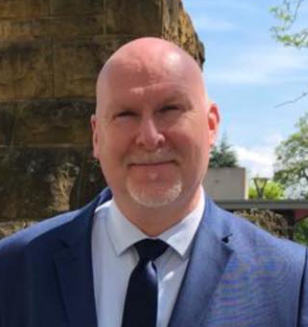Blake Lively exposes Justin Baldoni‘s alleged use of auto-deleting apps to hide a smear campaign. On October 22, 2025, her legal team filed court documents accusing Baldoni of deliberately destroying evidence. The revelations suggest a coordinated effort to damage Lively‘s reputation ahead of the It Ends with Us premiere in August 2024.
🔥 Quick Facts:
- October 22, 2025: Lively’s team files sanctions motion accusing Baldoni of evidence spoliation
- Signal app: Alleged use of auto-deleting messaging platform to hide messages about smear campaign
- 12 discovery motions: Lively’s team filed multiple actions to obtain evidence from Baldoni’s team
- $400 million: Baldoni’s 2025 defamation lawsuit later dismissed by federal judge in June
- March 2026: Trial scheduled in New York federal court to determine truth of allegations
The Auto-Delete Discovery That Changes Everything
Legal filings from October 22 reveal that Baldoni’s team allegedly used Signal, an app known for permanently deleting messages, to discuss executing a smear campaign against Lively. The actress’s lawyers call this deliberate evidence destruction. Lively’s Manatt, Phelps & Phillips attorneys say Baldoni’s team fought hard during discovery, either refusing to produce documents or hiding them behind attorney-client privilege claims.
“Defendants have hid the ball at every turn in the discovery process, either failing to produce documents, or improperly cloaking them in the attorney-client privilege, forcing no less than twelve discovery-related motions to date against Defendants and their aligned third parties.”
The motion specifically names publicist Melissa Nathan and other team members for allegedly using auto-deleting platforms. Evidence emerged through depositions with former staffers including Katherine Case and Breanna Butler from Nathan’s PR firm. These witnesses revealed the use of Signal to coordinate messaging designed to damage Lively while promoting Baldoni.
Evidence of Intentional Destruction
Lively’s team argues that Baldoni anticipated litigation as early as August 2024 but deliberately selected communication methods that auto-delete. He then failed to preserve these messages before she filed her formal complaint in December 2024. This creates a powerful legal presumption of guilt.
The attorneys note that Baldoni’s publicist Jennifer Abel worked with Baldoni and Melissa Nathan to direct social media messaging after Lively initiated her action. Kristin Tahler, chief attorney for third-party defendant Stephanie Jones, declared: “Jen Abel conspired with Melissa Nathan, Justin Baldoni and Wayfarer to orchestrate a smear campaign and she did it in secret, outside of Joneworks and behind Stephanie Jones’ back. Conversations were moved to an auto-deleting platform and evidence was destroyed. There can be only one reason for this. They had something to hide.”
The broader pattern shows deliberate evidence destruction tactics. Beyond Signal, Baldoni’s team allegedly used voice memos set to auto-delete. These techniques targeted discussion of what Lively’s lawyers call the “Digital Campaign” against her. The goal was simple: eliminate all traces before courts could see them.
The Legal Weapon: Adverse Inference
Lively’s team is requesting an “adverse inference” ruling from Judge Lewis Liman. This legal tool allows courts to assume the missing evidence would have proven Lively’s claims. Essentially, silence becomes guilt. The presumption becomes: if Baldoni deleted everything, those deleted messages must have proven he ran the smear campaign.
Evidence Timeline
| When | What Happened |
| August 2024 | “It Ends with Us” premiere. Alleged smear campaign begins targeting Lively’s reputation |
| December 20, 2024 | Lively files sexual harassment complaint with California Civil Rights Department |
| January 16, 2025 | Baldoni countersues with $400 million defamation claim against Lively and husband Ryan Reynolds |
| June 9, 2025 | Federal judge dismisses Baldoni’s $400 million defamation lawsuit entirely |
| October 22, 2025 | Lively’s team files sanctions motion exposing Signal app use and evidence destruction |
What Happens Next in Court
The case heads to trial in March 2026 in New York federal court. Judge Liman must decide whether to grant the adverse inference request. If approved, this devastating ruling assumes Baldoni destroyed evidence proving his guilt. Baldoni’s defense becomes nearly impossible in that scenario.
Lively’s team is also seeking sanctions against Baldoni, Wayfarer Studios, and their publicists for evidence spoliation. The 30-page memorandum states two key facts: “(1) despite Defendants’ clumsy efforts to cover their tracks, there is substantial evidence that the retaliatory campaign was, in fact, implemented as planned, and (2) Defendants flouted this Court’s orders, and destroyed and/or failed to preserve or produce additional material and highly relevant evidence.”
Baldoni’s legal team has not responded to the latest filings. His representative Melissa Nathan declined to comment. However, Baldoni continues denying all allegations. His lawyers maintain the harsh online backlash against Lively was “organic” from genuine people upset about her conduct, not orchestrated.
Why This Evidence Matters Most
The Signal app revelation represents the smoking gun moment. Lively’s team finally has concrete proof that Baldoni anticipated litigation and took active steps to hide communications. Using auto-delete platforms isn’t accidental. It requires deliberate selection and setup.
This evidence transforms the narrative from he-said-she-said to clear misconduct by Baldoni’s team. The decision to use Signal suggests guilt and consciousness of wrongdoing. Why else delete everything? Lively also received surprising support from Jonesworks LLC, the PR firm representing Baldoni, filing its own sanctions motion on the same day.
Prior court filings revealed unsealed text messages and emails allegedly planning the smear campaign. But these auto-deleted Signal conversations could have contained even more incriminating evidence. Lively’s lawyers argue this destruction violated court orders and destroyed the best evidence of conspiracy.
The Road to Set 2026 Trial Resolution
As discovery closes and trial approaches, the momentum shifts toward Blake Lively. Judge orders requiring evidence preservation existed. Baldoni’s team ignored them anyway. The auto-delete tactic backfired spectacularly because depositions revealed what happened behind closed doors.
Whether Judge Liman grants the adverse inference remains uncertain. But the legal filings make one thing crystal clear: Baldoni’s team had something to hide. The Signal strategy wasn’t random. It was calculated. The cover-up may ultimately speak louder than the original allegations themselves.
Sources
- Deadline – Legal analysis of Blake Lively vs. Justin Baldoni court filings
- NBC News – Coverage of sexual harassment allegations and lawsuit developments
- BBC News – Global reporting on the “It Ends with Us” legal battle
Similar posts:
- Blake Lively’s lawyers allege Justin Baldoni used auto-deleting app Signal for smear campaign
- Blake Lively accuses Justin Baldoni of destroying evidence using encrypted Signal app
- Justin Baldoni accused of destroying evidence using encrypted app Signal in Blake Lively lawsuit
- Blake Lively accuses Justin Baldoni of destroying evidence in legal filings
- Justin Baldoni allegedly used Signal app to delete smear campaign messages vs Blake Lively

Daniel Harris is a specialist journalist focused on the crossroads of breaking news, extraordinary history, and enduring legends. With a background in historical research and storytelling, he blends timely reporting with timeless narratives, making complex events and ancient myths resonate with today’s readers. Daniel’s work often uncovers surprising links between present-day headlines and legendary tales, offering unique perspectives that captivate diverse audiences. Beyond reporting, he is passionate about preserving oral traditions and exploring how extraordinary stories continue to shape culture and identity.

